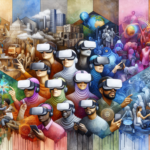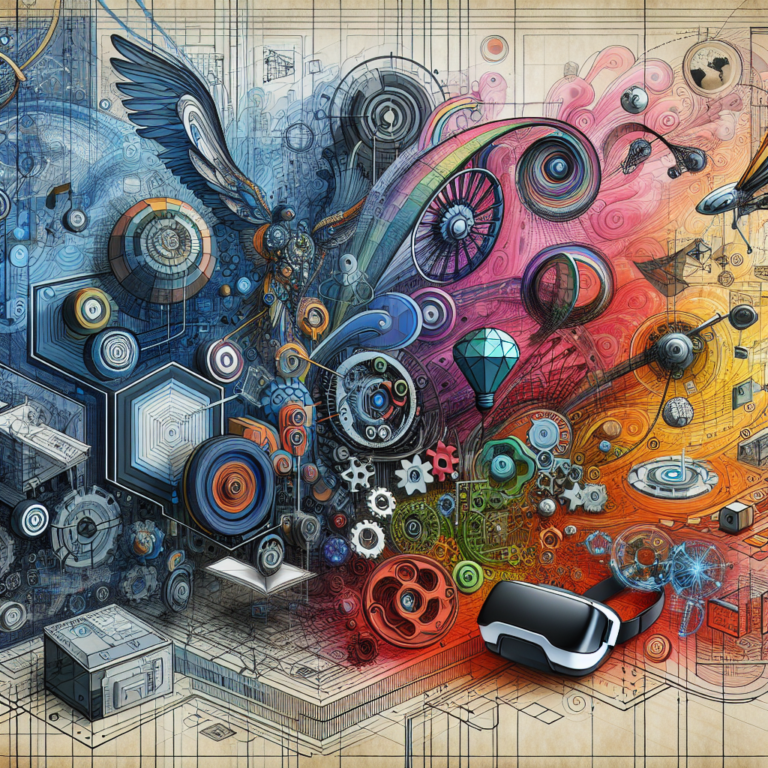Revolutionizing XR Content Creation: The Collaborative Power of Adobe and Autodesk
In today’s fast-paced world, the landscape of extended reality (XR), which includes virtual reality (VR), augmented reality (AR), and mixed reality (MR), is advancing rapidly. One compelling scenario here is the merging of expertise from two industry leaders: Adobe and Autodesk. Together, they could develop a streamlined workflow specifically designed for **XR content creation** and design, profoundly impacting various sectors.
XR Content Creation : Harnessing the Expertise of Adobe and Autodesk
Both Adobe and Autodesk are renowned for their innovative tools and leadership in their fields. Adobe excels with its creative suite that features well-known programs like Photoshop, Illustrator, and Premiere Pro, essential for content creation. Conversely, Autodesk is recognized for its powerful design and engineering software, including popular applications like AutoCAD, Maya, and 3ds Max, widely used in architecture, engineering, construction, and media.
By collaborating, these companies could harness their unique strengths to form a cohesive workflow that marries Adobe’s content creation capabilities with Autodesk’s advanced design tools. For instance, this partnership could facilitate a seamless integration of Adobe’s creative applications with Autodesk’s engineering software, ultimately streamlining processes for XR content creation
XR Content Creation : Optimizing Content Creation Workflows
The union of Adobe and Autodesk would primarily enhance the efficiency of content creation workflows. Adobe’s Experience Manager and other tools could blend seamlessly with Autodesk’s XR solutions. like Workshop XR, enhancing transitions throughout the various stages of the content workflow.
- Designers could effectively use Autodesk to build detailed 3D models.
- These models could be easily imported into Adobe software for further enrichment and animation.
- This streamlined integration minimizes time lost on data transfer and formatting, allowing creators to focus on their artistic vision instead.
Fostering Collaboration in a Remote Work Environment
XR technologies are revolutionizing how teams collaborate, especially as industries become more globalized. A unified Adobe-Autodesk workflow could elevate this further by introducing effective collaboration tools that support immersive teamwork.
Tools like Microsoft Mesh and Meta Horizon Workrooms, which already support Autodesk, could merge with Adobe’s collaborative features. This would create virtual meeting zones where teams can come together to discuss projects, evaluate designs, and make timely decisions. Such an approach would not only enhance collaborative efforts but also decrease unnecessary travel, making remote work more productive and efficient. 🌍
XR Content Creation : Revolutionizing Advanced Training and Simulation
A notable area where the synergy of Adobe and Autodesk could bring significant benefits is in training and simulation. XR’s immersive training settings are instrumental in high-stakes fields such as construction, manufacturing, and healthcare, giving personnel a safe and realistic training experience.
By integrating Adobe’s content creation tools with Autodesk’s XR offerings, these training simulations can take on an even richer quality. Trainers could develop intricate, interactive scenarios utilizing Adobe’s robust tools and deploy them within Autodesk’s extensive environments. thus providing trainees with deeply immersive and effective learning experiences.
Innovating Across Multiple Industries
The implications of a united Adobe-Autodesk workflow for **XR content creation** would resonate widely across various sectors. Below, we explore a few industries that stand to gain:
Architecture, Engineering, and Construction (AEC)
- Professionals in architecture and engineering could create rich, interactive 3D models of buildings and infrastructure.
- This enhancement in design accuracy permits better collaboration and accommodates real-time feedback. leading to more efficient workflows and fewer costly changes during construction.
Media & Entertainment
- Content creators in the media sector would benefit from streamlined processes integrating 3D modeling, animation, and visualization tools.
- This could elevate the ability to produce high-quality visual effects, animations, and engaging content while meeting the expectations of increasingly sophisticated audiences.
Healthcare
- In the medical field, this collaboration could lead to advanced training simulations and educational tools for patients.
- Healthcare professionals could utilize immersive settings to rehearse complex procedures. while patients benefit from interactive content explaining their conditions and treatment options more clearly.
Shaping the Future of Design and Collaboration
As boundaries between physical and digital environments blur, the demand for seamless workflows in XR content creation and design intensifies.
By embracing this transformative digital age, businesses and professionals can unleash unprecedented creativity, enhance collaboration, and improve training. The future of design is immersive, interactive, and interconnected, and a collaborative effort between these two industry leaders could provide the key to advancing this transformation. 💡✨




0 Comments